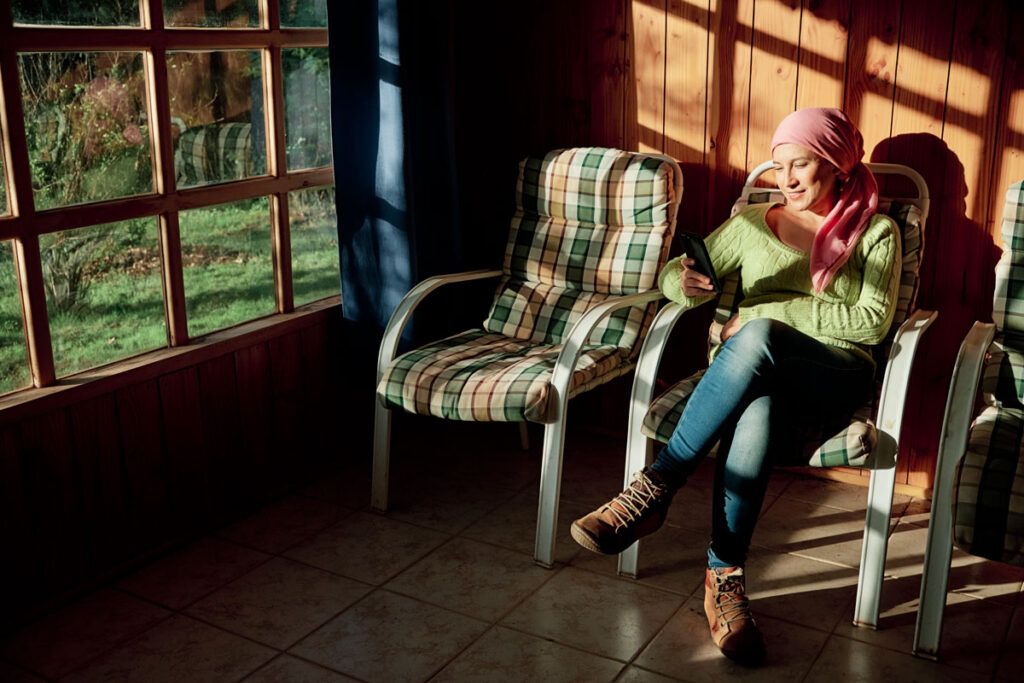Leukemia and lymphoma are both types of cancer. You might experience different symptoms depending on the condition. Although treatment options are similar, the most suitable can depend on your age and personal health factors, as well as the subtype of leukemia or lymphoma.
Leukemia vs. lymphoma: Key differences

Leukemia and lymphoma are both kinds of blood cancer. They both affect white blood cells but have some key differences.
For example, leukemia is a cancer of the blood and bone marrow. On the other hand, lymphoma is a cancer of the lymphatic system. The lymphatic system makes the body’s immune cells.
In addition, leukemia causes a large increase in abnormal white blood cells that can’t fight infection. Due to the large number of these cancerous white blood cells, it’s harder for the bone marrow to make other essential cells, specifically platelets and red blood cells.
Conversely, lymphoma is when white blood cells called lymphocytes become cancerous. The cancerous cells build up in the lymph nodes and impair your immune system over time.
There are three types of blood cancer: leukemia, lymphoma, and myeloma. When plasma cells become cancerous, it is myeloma.
Diagnosis
A doctor can perform tests for leukemia. They might include a complete blood count (CBC) to check for abnormal levels of white blood cells and low levels of red blood cells or platelets.
To diagnose leukemia, the doctor will then take a sample of bone marrow for testing. This is to determine the type of leukemia you have.
However, it is not possible to detect lymphoma with blood testing, although a doctor might order blood tests to rule out an infection or other cause of your symptoms.
If you have swollen lymph nodes and a doctor suspects either non-Hodgkin’s or Hodgkin’s lymphoma, they may order a biopsy of the lymph node.
Symptoms
Leukemia and lymphoma have some symptoms in common, such as:
- fever
- weakness or fatigue
- weight loss
There are other symptoms unique to each condition.
Symptoms of leukemia include:
- flu-like symptoms like chills and night sweats
- bleeding or swollen gums
- swollen tonsils
- headaches
- enlarged spleen or liver
- bone pain
- tiny spots on the skin
Symptoms of lymphoma include:
- swollen lymph nodes in the groin, armpit, or neck
- sweating
- itchy skin
- a skin rash that might be flat, thick, raised, pimple-like, or nodules
- chest pain
- difficulty breathing
Risk factors
Some factors might make it more likely for a person to develop leukemia or lymphoma.
Risk factors for leukemia include:
- Age: Leukemia most often happens to people over the age of 55, and more than half of cases are in people over the age of 65. It’s also the most common cancer in children.
- Genetic conditions: Conditions like Down syndrome may increase the risk.
- Chemical exposure: Long-term exposure to chemicals like benzene and ethylene oxide increases the risk.
Certain types of blood disorders and smoking can also increase your risk.
Risk factors for non-Hodgkin’s lymphoma include:
- Age: Most people who develop this condition are in their 60s or older.
- Sex: Most types of non-Hodgkin’s lymphoma are more common in males than females.
- Race: White Americans are more likely to get this condition than African Americans or Asian Americans.
- Family history: Having a parent, child, or sibling with non-Hodgkin’s lymphoma increases the risk.
- Radiation exposure: This can include radiation from cancer treatment.
- Having a weakened immune system: This can be from having HIV or taking immune-suppressing medications.
Risk factors for Hodgkin’s lymphoma are similar to non-Hodgkin’s lymphoma.
As with non-Hodgkin’s lymphoma, older age, weakened immune system, male sex, and family history increases the risk of Hodgkin’s lymphoma.
Some people are diagnosed with Hodgkin’s lymphoma in early adulthood. The family history link is between siblings, although most people who have Hodgkin’s lymphoma do not have a family history.
Your risk for Hodgkin’s lymphoma also increases if you have ever had infectious mononucleosis.
Leukemia
The 5-year relative survival rate of leukemia is 66.7%. About 1.6% of people will experience leukemia in their lifetime.
Treatment for leukemia depends on the subtype and a person’s individual factors, such as age and other health conditions. Among the treatments a doctor might recommend are:
- chemotherapy with drugs like bendamustine
- radiation therapy
- biological or targeted therapy
- stem cell transplant
People with acute leukemia might receive chemotherapy as it targets cells that are quickly dividing. In people with chronic leukemia, cells divide more slowly, and targeted therapy might be more suitable.
If you need help covering the cost of medications, the free Optum Perks Discount Card could help you save up to 80% on prescription drugs. Follow the links on drug names for savings on that medication, or search for a specific drug here.
